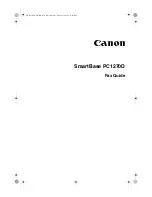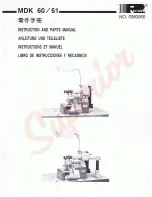
TROUBLE SHOOTING
TS
M
40.1
REV.0-04/04
only for models with electronic control of welding current.
06/04/04 M40-1-I
PROBLEM
POSSIBLE CAUSE
WHAT TO DO
No welding current but
auxiliary output is OK
1) Defective diode bridge
2) Problem with welding current control
(PCB)
1) Check the diodes of the bridge
2) Is the remote control switch in the inter-
nal position?
3) Check the diodes and SCR’s of the
bridge.
4) Check the transformer which supplies
power to the welding control PCB. If it
is OK replace the PCB
Weld poorly
1) Defective diode bridge
2) Problem with welding current control
(PCB)
1) Check the open circuit welding voltage.
If it is OK the diode bridge is OK. If it
is 1/3 or 2/3 of the nominal value check
the diodes or the SCR’s.
2) If the diode bridge is OK replace the
PCB.
Intermittently welds poorly 1) Bad connections to welding current PCB
2) Problem with welding current control
PCB
1) Check that the pins of the green connec-
tors are clean and making good contact.
Check that shunt connections are tight.
2) Replace the welding current control PCB
No welding output and
no auxiliary power
output
1) Short circuit in wiring
2) Defective condenser
3) Defective stator
4) Short circuited diode bridge
1) Check the wiring inside the welder for
a short circuit between cables or to
ground.
2) If the wiring is OK, short circuit the con-
denser to be sure that it is discharged,
disconnect all wires from condenser
and, using an ohmmeter, check that the
condenser is not short circuited.
3) If the condenser box is OK, disconnect
all leads from the stator except for those
going to the condenser box and check
the output from the alternator.
If there is no output from the welding
winding and the auxiliary winding,
replace the stator.
4) If there is output from all windings
reconnect the diode bridge and check
if there is welding current. If not the
diode bridge is defective. If there is
welding current connect the auxiliary
power leads one at a time until there is
no output; at this point, the short circuit
is in that line.
















































